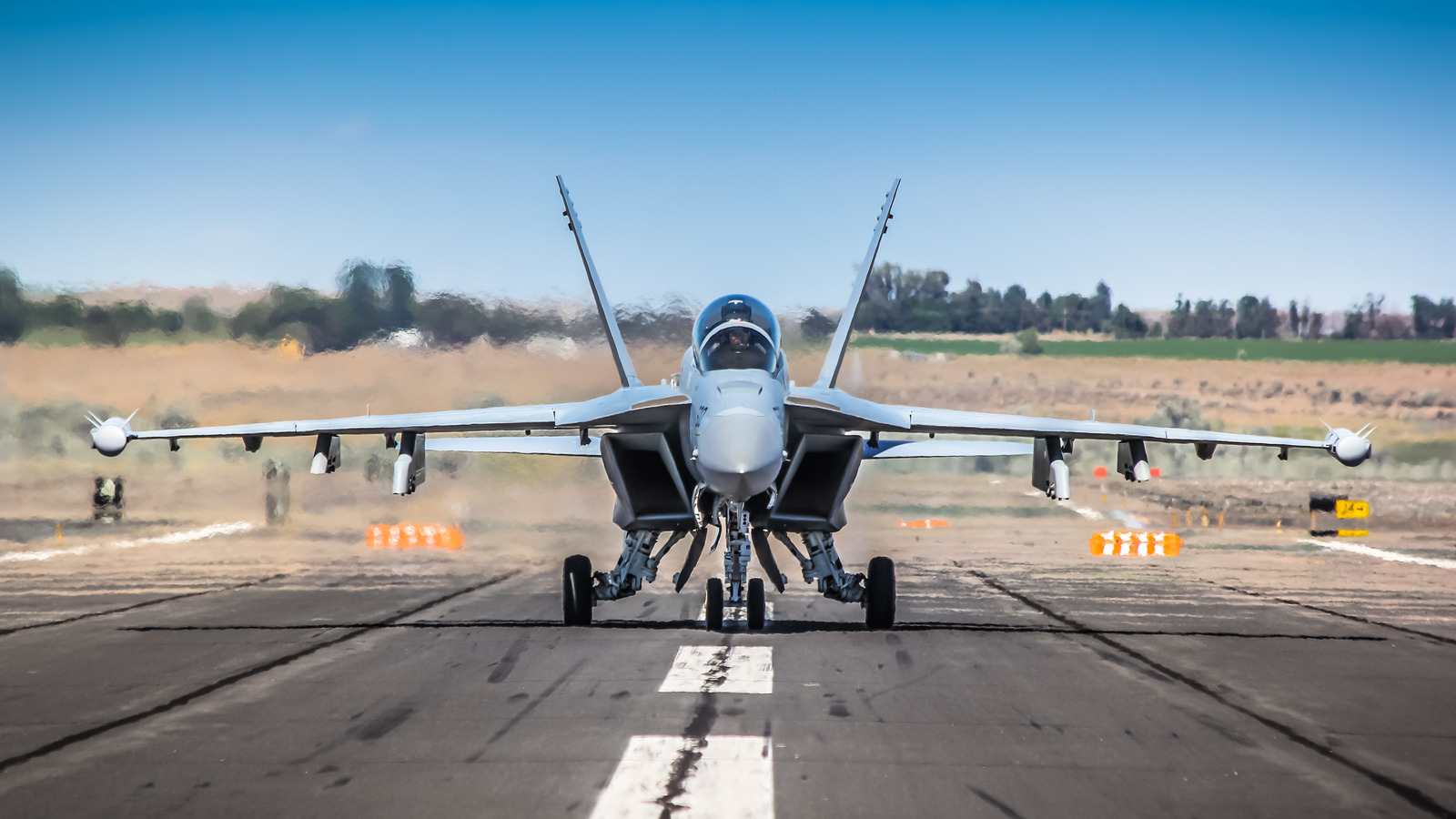
The High-Tech Aircraft Designed To Help Win Wars Without Firing A Single Shot – SlashGear
When the skies begin to rumble over a battlefield, the first weapon of war that comes to mind might be a bomber or fighter jet. Drone deployments may even creep into the picture. However, one of the primary fliers that travel with these deadly squadrons casts a menacing shadow, but carries little weaponry.
The EA-18G Growler is built off of the F/A-18F Super Hornet model, making it a truly iconic and terror-inducing aerial presence. However, the Growler provides tactical dominance in a unique manner: Instead of engaging in rugged dogfighting or deploying devastating missile packages to decimate ground targets, the EA-18G blasts electronic interference across a battlespace.
The presence of electronic warfare is another common misnomer when the layman thinks of battlefield combat. A scene from “The Americans” or “Homeland” might feel more fitting in a discussion of electronic engagement. Yet, this is a key tactical advantage in forward-facing battlefield elements as well.
Launched from aircraft carriers, this jet accompanies sorties into battle and is used to eliminate radar, enemy targeting systems, and missile locking capabilities. The removal of these essential resources from the enemy’s arsenal cripples first strike options and severely reduces counteroffensive or even defensive maneuverability in the moment.
Radar jamming is the Growler’s specialty
 Rancho_runner/Getty Images
Rancho_runner/Getty Images
The EA-18G is a potent offensive asset as a result of the aircraft platform it’s built on. However, equipment jamming is the aircraft’s primary use, broken up into electronic attack (EA) and suppression of enemy air defense (SEAD) missions. It’s a uniquely valuable aerial asset in hostile engagement, and routinely accompanies forward strike forces to disorient and defuse enemy infrastructure.
The aircraft is flown by a crew of two: One pilot and an accompanying “weapons systems officer.” The Growler has a wing span of 44.9 feet, and a length of 60.2 feet, standing 16 feet off the ground. The two F414-GE-400 engines produce a thrust force of 44,000 pounds. Growlers can reach an altitude ceiling of 50,000 feet, and cover a combat range of about 975 miles when fully loaded.
The Growler replaced a battle-tested aircraft that lent its service over Somalia, Bosnia, and elsewhere. The EA-6B Prowler could only reach a height of 38,000 feet, but had an improved range of 2,400 miles. The Grumman-built Prowler first served in Vietnam, and eventually was retired in 2019. The newer Growler first entered U.S. Navy service in 2006 with two test aircraft, and performed its first combat operations in 2011 during Operation Odyssey Dawn over Libya.
The Growler is a massive improvement over its predecessor: producing more thrust and speed, carrying offensive weaponry alongside jamming equipment, and utilizing a newer, versatile range of EA and SEAD tools beyond the ALQ-99 pods common to both.
EA-18G Growlers fly for the Royal Australian Air Force as well
 RAAF
RAAF
The EA-18G Growler is a prominent feature in the U.S. navy’s aerial arsenal. 160 examples of the aircraft were originally delivered by Boeing, the plane’s builder. However, the Navy isn’t the only force using these potent weapons platforms. The Royal Australian Air Force was allowed to purchase 12 EA-18G Growlers, entering service in 2019.
Australian Growlers also carry AGM-88 (HARM) missiles, designed to explode over detection equipment, as well as AIM-120 air-to-air missiles, and an AIM-9X Sidewinder missile. The Defense Security Cooperation Agency (operating within the umbrella of the Department of Defense) approved a sale in September 2021 to transfer one additional Growler aircraft to the Australian government to replace one that was lost in an accident.
The Growler was also used in flight trials in 2020 (alongside tow F/A-18 Super Hornets) at Pirkkala Air Base in Finland as part of another foreign allied procurement effort. The prowess of the EA-18G Growler makes it a highly sought after augmentation to national aerial combat programs around the world.
The Growler brings Navy pilots home safe
 Mario Tama/Getty Images
Mario Tama/Getty Images
The most important feature of the EA-18G Growler is the security these aircraft offer to Navy pilots. Launched alongside strike units from aircraft carriers (although some feature in land-based detachments), the Growler is capable of temporarily defeating or completely destroying ground-based radar and anti-aircraft weapons systems, as well as those located within or alongside seafaring vessels.
The tactical breadth of the Growler enables pilots engaged in dangerous and daring aerial combat missions to breathe a sign of relief. The aircraft drapes a blanket of protection over exposed bombers, vulnerable fighter aircraft, and slowly circling overhead refueling tankers (like the S-3B Viking in the ’90s and ’00s).
So important is effective electronic warfare that the availability of electronic warfare systems onboard Navy EA-6Bs before was a “go/no-go criterion for many strike missions [during Operation Desert Storm]. If Navy defense suppression wasn’t available, the missions didn’t fly,” it was noted in a summary of Desert Storm air operations in 1991.
In modern battle, detection and weapon targeting systems are even more effective at identifying and destroying their targets, making electronic warfare an even greater asset. Simply put, the EA-18G Growler is a combat necessity when it comes to protecting allied pilots and winning wars.






![Banana-Caramel Upside-Down Cake [Vegan] Banana-Caramel Upside-Down Cake [Vegan]](https://i0.wp.com/www.onegreenplanet.org/wp-content/uploads/2021/05/banana-caramel-upside-down-cake-scaled.jpg?resize=150%2C150&ssl=1)


























































